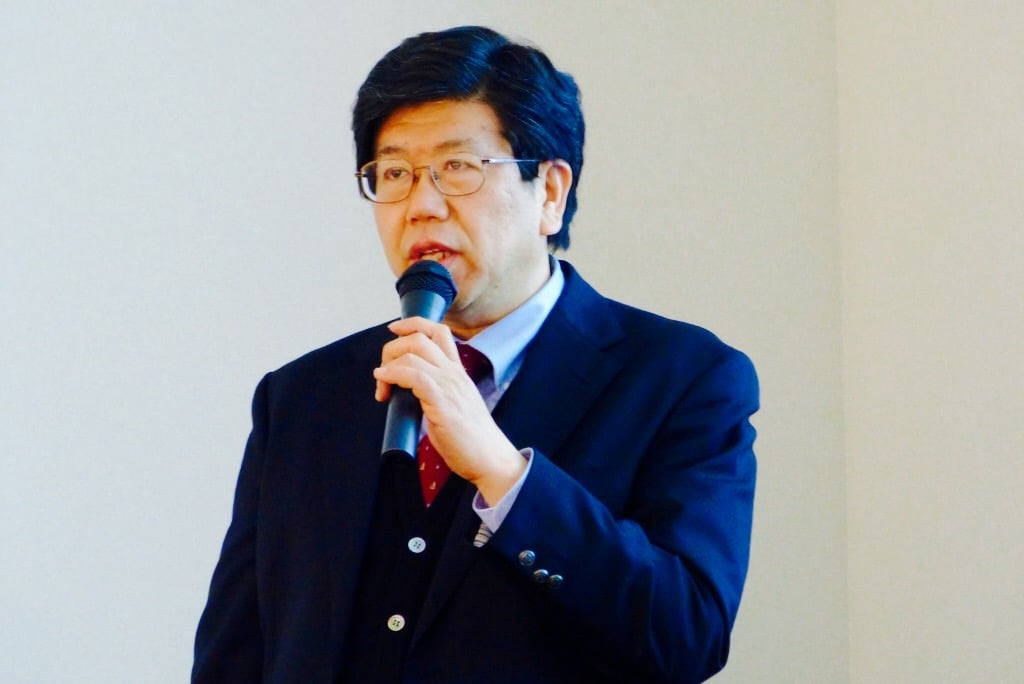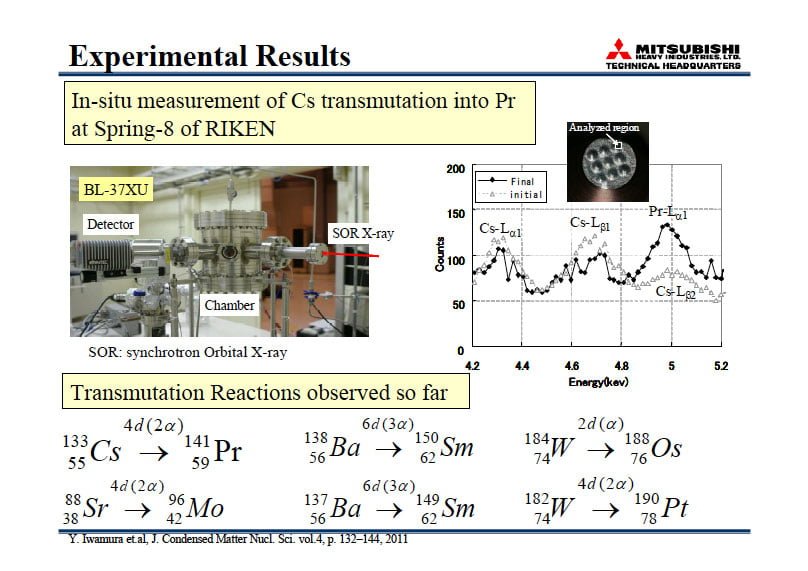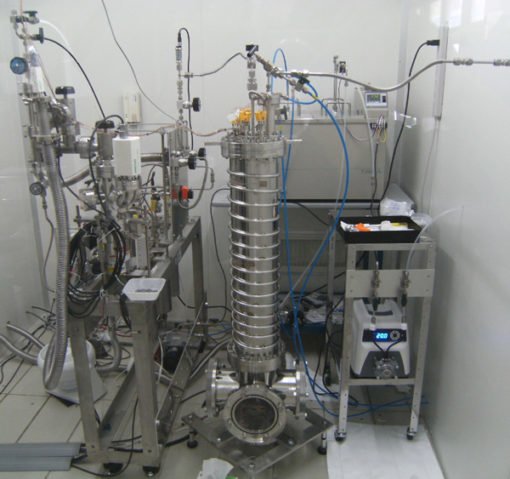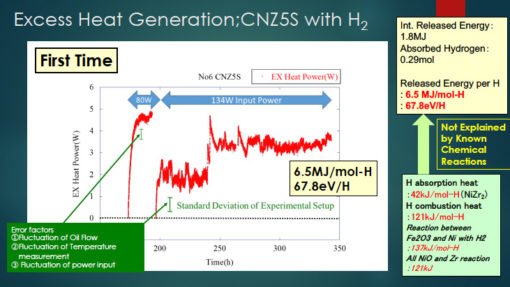
Dr. Yasuhiro Iwamura is the guest on the Cold Fusion Now! podcast with Ruby Carat. Dr. Iwamura is a Research Professor in the Condensed Matter Nuclear Science division at the Research Center for Electron
Photon Science at Tohoku University. He has been dividing his time there between engineering a second Metal Hydrogen Energy generator with Clean Planet Inc. , as well as continuing his signature transmutation work with Mitsubishi.
Listen to Yasuhiro Iwamura on the Cold Fusion Now! podcast with Ruby Carat here on our Podcast page.
After graduating from the University of Tokyo in 1990 with a degree in Nuclear Engineering, he received a research scientist position with Mitsubishi Heavy Industries. “After graduate school, I entered fundamental research laboratory of Mitsubishi Heavy Industries. At that time, Japan had a good economy, and fundamental research was very active,” says Dr. Iwamura.
“I had been interested in cold fusion and seeking a chance to propose a research theme related to cold fusion. Fortunately, ICCF-3 was held at Nagoya in Japan in October 1992, and I attended it. I talked with many researchers at the conference and I was convinced that cold fusion was real. So I proposed a research plan to my laboratory and it was approved.”
“At the beginning of my research, we mainly did gas-loading and electrolysis type experiments, and finally we reached the permeation in this transmutation method.”
Nuclear transmutation work is replicated
The nuclear transmutations method developed by Dr. Iwamura and his team at Mitsubishi uses a host material described as a “nano-structured thin-film composed of palladium and calcium oxide and palladium substrate, with a target element” then planted between the layers.

A typical target element of Cesium is then transmuted to Praseodymium. Barium has been transmuted into samarium and tungsten into platinum.
Dr. Iwamura cannot explain the mechanism of the reaction behind these results, but he does reveal an experimental fact that should give theorists a clue in trying to construct a model of the reaction.
“We observe 2 or 4 or 6 deuterons make fusion for the target materials. The exact mechanism for the transmutation is not clear, of course, but I speculate that two deuterons are related to helium.”
“A helium atom consists of two protons and two neutrons, and two deuterons consists of two protons and two neutrons. So I suspect that this kind of mechanism exists in this type of transmutation reaction.”
Dr. Iwamura believes that a “very small amount of foreign element like impurity plays a very important role to induce condensed matter nuclear reactions”, too.
In the podcast, he gives an example. “In the case of our type of transmutation reactions, if we put calcium oxide onto the palladium thin-film, near the surface area, transmutation reactions occur, but if we use palladium only, we cannot observe a transmutation reaction.”
“It’s just a speculation, but I speculate that the interface between the foreign element, like calcium oxide, and the main element like the palladium, at the near surface plays a very important role. The mechanism is not so clear, but I suspect this kind of mechanics is behind condensed matter nuclear reactions.”
Transmutation work provides method for radioactive waste cleanup
Yasuhiro Iwamura continues the Mitsubishi transmutation work at Tohoku with support from both Mitsubishi and Clean Planet, Inc. Clean Planet CEO Hideki Yoshino has organized several collaborative efforts with academia and industry in Japan with the hopes of engineering an ultra-clean energy technology, and, ridding the globe of the tons radioactive waste by transmuting it to benign materials.
Dr. Iwamura says, “So even though I’ve moved to Tohoku University from Mitsubishi Heavy industries, I continue to make transmutation experiments using radioactive isotope Cesium-133 at Tohoku University.”
“If this type of transmutation reaction can be applied to radioactive isotopes, it will be possible to get rid of the radioactivity of nuclear waste. The transmutation of a radioactive element is beneficial to society, because many nuclear reactors are working all over the world and generate toxic radioactive waste, and getting rid of toxic radioactivity from Fukushima area in Japan is also beneficial to our society.”

This transmutation work was replicated by other institutes such as Toyota R&D, and is still in its early research stages, but the effort, along with the MHE excess heat project, will benefit greatly from the recent shares of Clean Planet bought by the Mitsubishi Estate Company.
“The stronger financial base of Clean Planet is beneficial to my Tohoku team and to make wider choices towards commercialization”, says Iwamura. “So of course it’s very good, and we’re very grateful to the Mitsubishi Estate companies.”
Of course the commercialization effort includes MHE generator, too.
MHE energy profiles replicated with same samples
“My colleague Ito and I did not have much experience with excess heat experiments before we moved to Tohoku University, because our work at Mitsubishi Heavy Industry was only transmutations. So it was a good chance to learn excess heat generation experiments using the MHE apparatus funded by the Japanese government organization NEDO, the New Energy Development Organization.”
The original MHE generator is located at Kobe University, and is the work of Dr. Akito Takahashi, Dr. Akira Kitamura, as well as a team of scientists and graduate students.
Read our interview with Dr. Akito Takahashi on the Cold Fusion Now! blog here.

“The objective of our collaborative research is to clarify the existence of the anomalous heat generative phenomenon and to confirm reproducibility of the phenomenon. For the purpose, we did not change the design of the experimental apparatus intentionally. So, the second Metal Hydrogen Energy device located at Tohoku University is nearly equal to the first apparatus at Kobe University.”
“Of course we have some different points, for example our experimental apparatus is equipped with a larger number of measurement points, and some couples in our apparatus are slightly different to the first one, but basically, we did not change the design of the experimental apparatus intentionally to show the reproducibility of this phenomenon.”
Dr. Iwamura presented the latest second MHE generator results at ICCF-21 conference reporting excess heat results that were replicated by other labs using the same samples.
Watch Dr. Yasuhiro Iwamura’s presentation at ICCF-21 here on the ICCF-21 Youtube channel. Follow the link to download the presentation file in .pdf.
“Anomalous excess heat generations were observed for all the active samples at elevated temperature, about 150C-350C degrees Centigrade, and the amount of anomalous heat generation per hydrogen atom ranges from 10 eV per hydrogen to 100 eV per hydrogen or deuterium, which could not be explained by any known chemical process.”

Also, there were “coincident burst-like increased pressure -and gas temperature- events of the reaction chamber, which suggested sudden energy release in the reaction chamber.”
“These results were observed for all experiments using the copper-nickel-zirconium material with H2 gas. Also, very large local bursts of energy release were obtained as evidenced by the broken zirconia beads used as a medium for the nano-particles.”
“Excess heat experiments using the same material at Kobe and Tohoku Universities showed similar experimental results, and the qualitative reproducibility between Kobe and Tohoku was very good.”
Close communication is key to successful replication
The success of the Japanese LENR research program is unmatched by any other country on the globe, and while support for LENR is not universal within governmental organizations, the continued positive gains provided by the researchers there has made it easier for mainstream organizations to lend a helping hand in a country with big energy needs.
In the cross-disciplinary field of condensed matter nuclear science, collaborative research requires the coordination of scientists from different fields, and Dr. Iwamura feels that “good and frequent communication between Japanese groups is the key” to successful replications.
“For example, I know Professor Takahashi and Professor Kitamura very well, and I ask them frequently about experimental device and method in detail. And during the NEDO project, our research groups often held meetings, and exchanged detailed information. So communication is the key, I think.”
Listen to Yasuhiro Iwamura on the Cold Fusion Now! podcast with Ruby Carat here on our Podcast page.
Patreon is a platform for supporting Creators like Cold Fusion Now!. You can pledge as little as a dollar per episode and cap your monthly spending to a limit you set. We are a totally self-funded LENR advocacy group that can only operate with your support.
When we deliver, you reward the work!
Visit us on Patreon to sign-up and become a Patron!
Atomic Love and THANKS to our new and continuing supporters. We are making it happen for a breakthrough energy future because of You. THANK YOU to the US, Great Britain, and Italy for your recent contributions.
If you haven’t subscribed yet, go to our website at coldfusionnow.org/sponsors/ to be a Cold Fusion Now! SuSteamer or sign-up on Patreon.
The Cold Fusion Now! Collective will be attending the LANR/CF Colloquium on the 30th Anniversary of the announcement of cold fusion! We’ll be collecting video for our documentary on the field – hope to see you there




